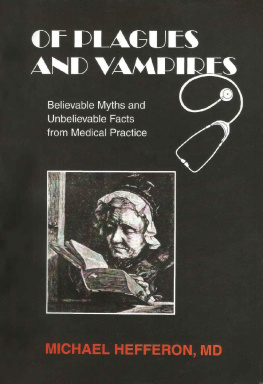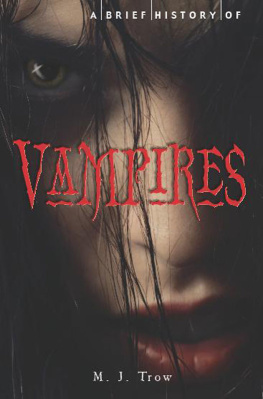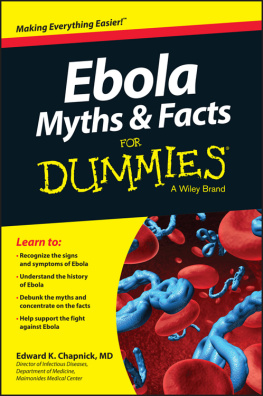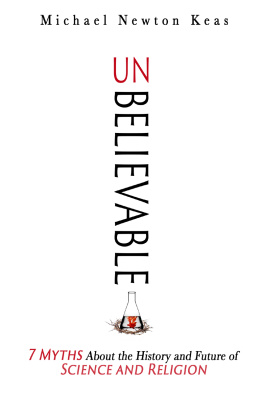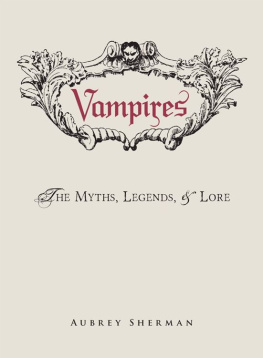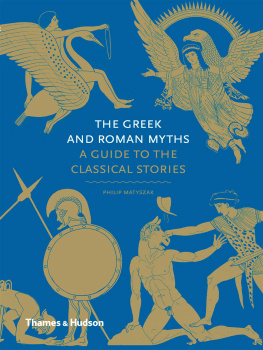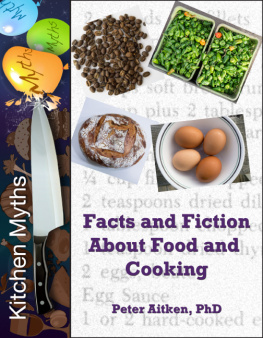Hefferon - Of Plagues and Vampires: Believable Myths and Unbelievable Facts from Medical Practice
Here you can read online Hefferon - Of Plagues and Vampires: Believable Myths and Unbelievable Facts from Medical Practice full text of the book (entire story) in english for free. Download pdf and epub, get meaning, cover and reviews about this ebook. year: 2017, publisher: Woodpecker Lane Press, genre: Children. Description of the work, (preface) as well as reviews are available. Best literature library LitArk.com created for fans of good reading and offers a wide selection of genres:
Romance novel
Science fiction
Adventure
Detective
Science
History
Home and family
Prose
Art
Politics
Computer
Non-fiction
Religion
Business
Children
Humor
Choose a favorite category and find really read worthwhile books. Enjoy immersion in the world of imagination, feel the emotions of the characters or learn something new for yourself, make an fascinating discovery.
Of Plagues and Vampires: Believable Myths and Unbelievable Facts from Medical Practice: summary, description and annotation
We offer to read an annotation, description, summary or preface (depends on what the author of the book "Of Plagues and Vampires: Believable Myths and Unbelievable Facts from Medical Practice" wrote himself). If you haven't found the necessary information about the book — write in the comments, we will try to find it.
Hefferon: author's other books
Who wrote Of Plagues and Vampires: Believable Myths and Unbelievable Facts from Medical Practice? Find out the surname, the name of the author of the book and a list of all author's works by series.
Of Plagues and Vampires: Believable Myths and Unbelievable Facts from Medical Practice — read online for free the complete book (whole text) full work
Below is the text of the book, divided by pages. System saving the place of the last page read, allows you to conveniently read the book "Of Plagues and Vampires: Believable Myths and Unbelievable Facts from Medical Practice" online for free, without having to search again every time where you left off. Put a bookmark, and you can go to the page where you finished reading at any time.
Font size:
Interval:
Bookmark:
OF PLAGUES
AND VAMPIRES
Believable Myths and Unbelievable Facts from Medical Practice
DR. MICHAEL HEFFERON
WOODPECKER LANE PRESS
Copyright Michael Hefferon 2017
All rights reserved. No part of this book may be reproduced or transmitted in any form or by any means, electronic, mechanical, photocopying, recording, or otherwise without written permission from the publisher, except by a reviewer, who may quote brief passages in a review. The author holds copyright in his work.
ISBN: 978-1-7750092-0-7
Library and Archives Canada Cataloguing in Publication
Hefferon, Michael, author
Of plagues and vampires: believable myths and unbelievable
facts from medical practice / Michael Hefferon.
Includes bibliographical references.
978-1-7750092-0-7 (electronic book)
1. Medical misconceptions. 2. Medicine, Popular. I. Title.
R729.9.H64 2017 610 C2017-901249-5
Cover design: Maureen Garvie/ Allan Graphics
Author photo: Greg Black Photography
Published in Canada by Woodpecker Lane Press
Kingston, ON K7K 5E2
woodpeckerlane@gmail.com
SHAVING WILL MAKE YOUR HAIR grow in thicker. Swim right after you eat, and youll get a cramp and drown.
True? Or only myths?
Myths, defined as widely held but false notions, continue to pervade our everyday life. And after 40 years of practising medicine on three continents, I maintain that no group can hold a candle to medics when it comes to holding dubious beliefs, many of them propagated by our own profession!
When I entered medicine in 1970, Latin was a prerequisite, and biology was not. Extra points were given for classical Greek. Trinity College in Dublin graduated doctors with a combined degree in literature and medicine. But while medicine is rooted in ancient knowledge, it has been transformed, particularly since the latter half of the twentieth century, into a science-based medium for advancement of wellness and elimination of disease. In recent years, technology and bio-science have enabled medical scientists to prove or disprove beliefs that have been around for many generations.
Over the course of my 40-year medical career, 30 years of it devoted to the care of sick children, I have had countless encounters with beliefs closer to folklore than fact or science. For example: women have one rib more than men. Or: we should all be on gluten-free diets. Vampires really exist as a medical phenomenon. Electric shock treatment (ECT), rather than a tool in helping patients with mental illness, is a form of medical torture.
Treating a sick or troubled child today requires more than just lab tests and referral letters. One of my first questions is What do the patient and the parents believe regarding their medical situation? What if parents believe that a glass of wine the mother drank when she was pregnant caused their childs developmental symptoms? What if they believe that blood transfusions are likely to lead to permanent damage or infection to their child? Or, in the case of Jehovahs Witnesses, that the receiving of blood is damaging to their childs soul?
In these pages I explore these and many more beliefs. Join me in touring the interface of traditional beliefs as they meet modern medicine. And remember that in 1500 AD, professing a belief that the world was round rather than flat could lead to imprisonment, excommunication, or worse!
I am eternally grateful to all who encouraged and supported me in the writing of this book. Such an endeavour encompasses stories from teachers in my distant past and students in my day-to-day life.
Thanks to Midia, for your patience and endless typing.
To Catherine, Kate, Barry, and Claire for your special interest and help with the project.
And especially to Maureen Garvie, who has done so much to bring this book to its completion.
Michael Hefferon
2017
I WASNT LONG INTO my career as a physician and educator before I realized that many of my referrals were coming from colleagues, usually family medicine specialists. They often seemed uncertain as to the veracity of their own teaching on matters of childhood medicine. Does teething really cause fever in infants? Do iron drops really cause constipation in children?
At medical seminars known as CMEs, for Continuing Medical Education I developed a format I called Pediatric Myths and Old Wives' Tales, which seemed popular with attendees. Many in my audiences were family doctors or nurse practitioners; all were interested in the true facts around common health problems.
Does covering our ears in cold weather help prevent ear infections, for example? Is acne caused by not washing ones face enough or by eating too much chocolate? Is gout, as many believe, the result of a lavish lifestyle of wine, women, and song?
We cling to our myths. It is hard to blame people for adhering to traditional folk remedies that appear to work, if we wait long enough. Homeopathy evolved in the 1800s; today, it is sometimes viewed as pseudoscience. However, back then, medics bled and leeched and purged people, performing primitive operations using whiskey as an anaesthetic. Some patients survived, and some were even cured.
Much of western medicine is built on concepts and practices arising out of the Greek and Roman cultures cultures known for embodying their insights in myth. In classical Greek, the word mythos means story, while logos means something for which truth can be demonstrated. So, mythology translates as a story that is demonstrably true. Examples of myths with respectable connections to the medical profession are still with us; they include the Greco-Roman myths about Narcissus, Oedipus, and Ondine.
Narcissus was the son of a river god, who rejected the advances of a nymph. She then prayed to Venus, the goddess of love, who condemned Narcissus to an eternity of falling in love only with himself. Today we apply Narcissuss name to the term narcissistic personality disorder to describe a specific psychiatric diagnosis. These are people who lack empathy and have a deep need for admiration, along with an inflated sense of their own importance. Like Narcissus, they are in love with themselves. Sound familiar?
Oedipus in Greek mythology was a king of Thebes who, despite his own efforts to the contrary, fulfilled the prophecy of the Oracle at Delphi. He unwittingly killed his father, then married his mother, and with her produced four more children. In modern psychiatry, sexual attraction to ones mother has been given the name of Oedipus Complex Sigmund Freuds theory on the various ways that children identify with the parent of the same sex, which, when unresolved, is a possible cause of a personality disorder.
Ondine was a nymph who wedded a mortal named Palemon. When Palemon was later unfaithful, he was cursed by Ondine to breathe only while awake, and so never slept again. The myth still gives its name to a medical condition known as Ondines curse a syndrome of central apnoea after spinal surgery, whereby patients can only breathe while awake and need ventilators to breathe while sleeping. Fortunately, neurosurgery patients with Ondines curse can take a low-pressure ventilator home and sleep while the machine supports their breathing.
Today, myth is considered inferior to evidence-based science. The Oxford dictionary defines myth as a widely held but false notion yet we have often heard that myth is more potent than reality. What people believe is central to their upbringing, central to their culture and their experiences; it is influenced by their parents, teachers, clergy, and colleagues. Is that why myth continues to play such a significant role in medicine?
Font size:
Interval:
Bookmark:
Similar books «Of Plagues and Vampires: Believable Myths and Unbelievable Facts from Medical Practice»
Look at similar books to Of Plagues and Vampires: Believable Myths and Unbelievable Facts from Medical Practice. We have selected literature similar in name and meaning in the hope of providing readers with more options to find new, interesting, not yet read works.
Discussion, reviews of the book Of Plagues and Vampires: Believable Myths and Unbelievable Facts from Medical Practice and just readers' own opinions. Leave your comments, write what you think about the work, its meaning or the main characters. Specify what exactly you liked and what you didn't like, and why you think so.

